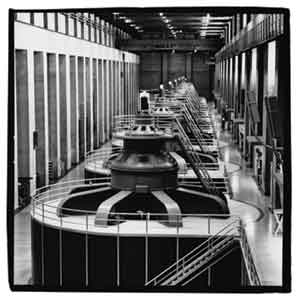
This scene has played out across every food plant at one time or another. Materials, labor, and energy are the top operating costs for most food plants. Materials and labor are viewed as variable costs that move in tandem with production volume. Energy management--the consumption, purchase, and optimization of fuel, hydrocarbon-based feedstocks, and electricity--is often treated as a fixed cost. While a plant manager can look to staff members specifically accountable for materials and labor, energy management often falls into the "white spaces" on the organization chart. It is partly under engineering, partly under operations, purchasing is often involved, and accounting has to pay the bills. Usually there is no specific person who manages the plant's energy process.

Enterprise Energy Management (EEM) is a relatively new concept. Historically, a company may have someone responsible for purchasing energy contracts or energy on the spot market, but there are few organizational systems for tracking the use of the energy or monitoring the billing. In fact, few companies are able to either apply contracts to energy billings or accurately allocate energy costs to consuming cost centers. Chris Andreoni, corporate vice president of purchasing for Boise, ID-based agribusiness giant J. R. Simplot Company thinks, "there needs to be a connection between energy positions, utilization, efficiency programs and the way in which plants pay for energy. These costs are significant and must be managed to the fullest extent possible."
Enterprise Energy Management addresses the issue of integrating all the business processes involved in energy decision-making into one consistent infrastructure. There are four major components to EEM:
- Energy analysis as a function of project engineering on capital projects
- Energy procurement in terms of negotiating contracts to satisfy plant requirements
- Energy management in plant operations to optimize energy rates
- Evaluation of energy costs to ensure that energy contracts are being applied correctly.
Schurr has seen a number of areas where projected bottom line energy dollars did not get to the bottom line. "Capital project analysis is often flawed in two ways. First, average energy prices rather than marginal prices are used and, second, some projects are projected to reduce the peak energy demand but actually do not impact the peak," Schurr said. Other problems have been noted in changing energy profiles on lines where run hours are not accurate or loading is based on nameplate rather than actual usage.

Energy management has become more complex as food companies move toward more intensively managing their energy programs. For example, most energy suppliers offer energy cost saving programs like load curtailment or demand response, or they may assign additional costs to exceeding peak demand usage. To be effective in these changing situations, energy managers need to have near real time monitoring of their energy demand. The utilities require a fast response with an accurate estimate of the amount of energy that can be curtailed. "It's the sort of process that requires significant study in advance, fast analysis when offered, and rapid execution to implement" said Schurr.
Invoice and energy contract reconciliation is another area where EEM software can provide cost savings. Many food companies have contract management software programs that reconcile customer payments to invoiced shipments, but for energy purchases, the contracts are managed at best with spreadsheets. By moving to an integrated EEM system, the reconciliation of energy invoices is part of a process on the front end of accounts payable where more detailed information about usage and rates can be stored and managed.
An EEM system can give energy users ownership of the procurement and management of their electrical energy needs. The EEM system can identify enterprise-wide energy needs by profiling usage patterns and aggregating information across all of the energy consumption points in the enterprise. Companies that make an investment in an energy management system will be building the foundation for strategic cost savings.

